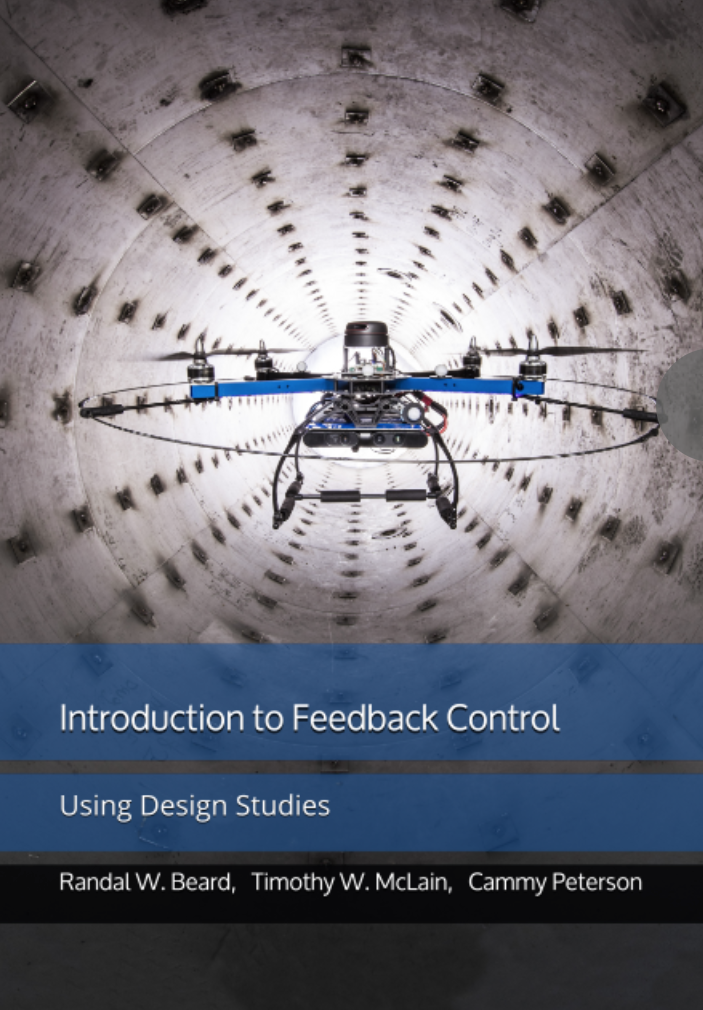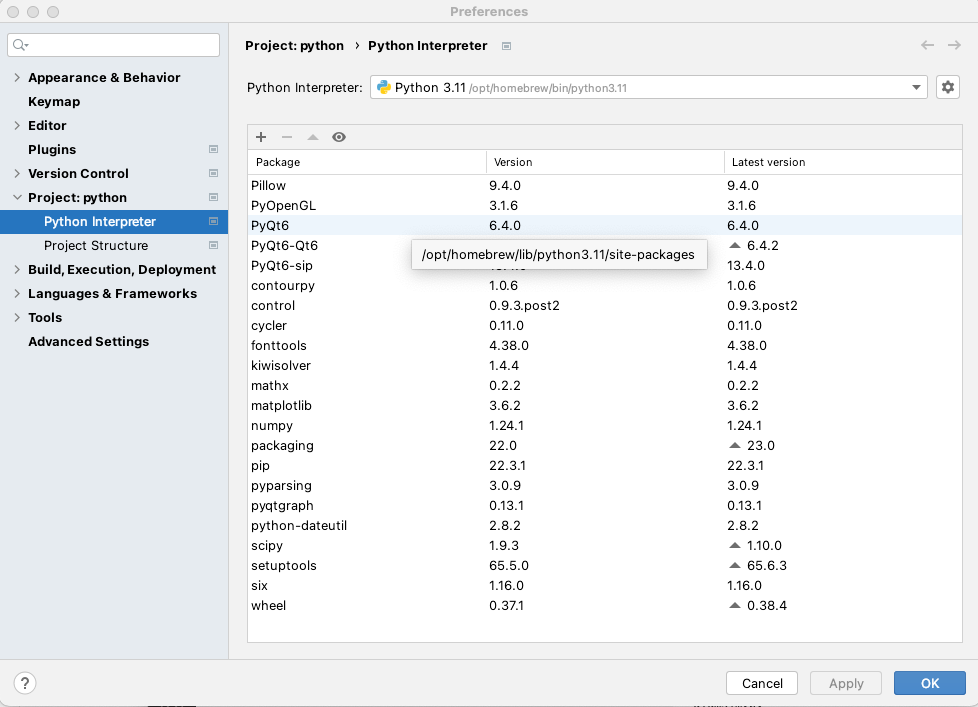Randal W. Beard, Timothy W. McLain Cammy Peterson Marc Killpack
Hardcopy available on Amazon
PDF Version of Book - A PDF version of the book is available at this link. - When typos are found, they will be fixed and the most recent version of the book will be posted here. - Please send typos and other suggestions to beard@byu.edu.
(Under construction) The following lecture materials are included as a resource for instructors. The slides closely follow the book. We welcome suggestions on how these slides might be improved.
| Chapter | PDF Slides | Powerpoint | Last Modified |
|---|---|---|---|
| Chapter 1 - Introduction | chapter1.pdf | chapter1.pptx | Sept 2019 |
| Chapter 2 - Kinetic Energy | chapter2.pdf | chapter2.pptx | Sept 2021 |
| Chapter 3 - Euler Lagrange | chapter3.pdf | chapter3.pptx | Sept 2021 |
| Equations of Motion + Physics Engine | eom.pdf | eom.pptx | Jan 2023 |
| Chapter 4 - Linearization | chapter4.pdf | chapter4.pptx | Sept 2021 |
| Chapter 5 - Transfer Function Models | chapter5.pdf | chapter5.pptx | Jan 2023 |
| Chapter 6 - State Space Models | chapter6.pdf | chapter6.pptx | Jan 2023 |
| Chapter 7 - Second Order Systems | chapter7.pdf | chapter7.pptx | Jan 2023 |
| Chapter 8 - Second Order Design | chapter8.pdf | chapter8.pptx | Jan 2023 |
| Chapter 9 - Integrators | chapter9.pdf | chapter9.pptx | Feb 2023 |
| Chapter 10 - Digital PID | chapter10.pdf | chapter10.pptx | Feb 2023 |
| Chapter 11 - Full State Feedback | chapter11.pdf | chapter11.pptx | Feb 2023 |
| Chapter 12 - Full State with Integrators | chapter12.pdf | chapter12.pptx | Feb 2023 |
| Chapter 13 - Observers | chapter13.pdf | chapter13.pptx | March 2023 |
| Chapter 14 - Disturbance Observers | chapter14.pdf | chapter14.pptx | March 2023 |
| Chapter 15 - Frequency Response | chapter15.pdf | chapter15.pptx | March 2023 |
| Chapter 16 - Frequency Specifications | chapter16.pdf | chapter16.pptx | March 2023 |
| Chapter 17 - Robustness Margins | chapter17.pdf | chapter17.pptx | April 2023 |
| Chapter 18 - Compensator Design | chapter18.pdf | chapter18.pptx | Nov 2021 |
This Gitlab account contains complete python, matlab, and simulink solutions to the three design problems presented in the book. We will be actively maintaining the Python solutions.
The lab description and assignments are described in the hummingbird lab manual, which can be accessed below. During Winter 2023, the manual will be under construction and will be updated frequently. You should re-download the manual before doing each lab.
Template files for the hummingbird simulation are contained in the GitHub directory "_hummingbird_sim."
Template files for the hummingbird hardware lab are contained in the GitHub directory "_hummingbird_lab."
You will need to install a version of python 3 on your computer. Download the latest version of python from https://www.python.org.
You will also want to install an IDE. We recommend either:
Install the following python packages:
- numpy
- slipy
- matplotlib
- control
- pyqtgraph
- pyqt6
- pyopengl
In linux or macos, you can install a python package using the command
pip3 install numpy
If you are using pycharm, open Settings>Project:python>Python Interpreter. Make sure that the latest python interpreter is selected at the top, and then click "+" do add a package and search for the needed package. For example, my system is set up as shown below.
Alternatively, you may use this requirements file to download all the necessary dependencies: requirements.txt
To install these dependencies, simply use the command:
pip3 install -r requirements.txt
The Jupyter notebooks in this repository were developed by Dr. Robert Leishman at Air Force Institute of Technology.
They are designed to be run in google colab.

